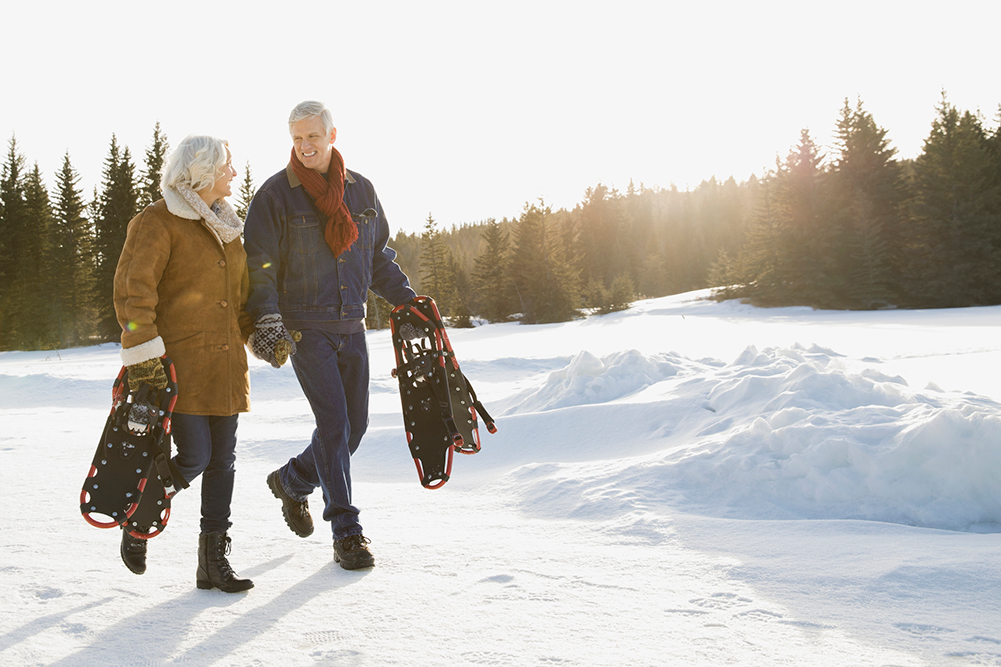
 What is the key to staying active in the winter months? Find an activity that you enjoy! Learn more tips to stay active in this article from Brian Abbott, DO, with Northern Light Orthopedics.
What is the key to staying active in the winter months? Find an activity that you enjoy! Learn more tips to stay active in this article from Brian Abbott, DO, with Northern Light Orthopedics.
Moving your body regularly is critical for good health. We know that exercise helps us manage our weight, blood pressure, prevent risk of falls, strengthens bones and muscle. Regular exercise also reduces the risk for certain types of cancer, cardiovascular disease and has been helpful with managing symptoms of anxiety and depression.
I have found that choosing an activity that I enjoy helps me stay committed to doing it regularly. I’ve taken up skiing, and I love hiking with my family and our golden retriever. I encourage you to find ways to make being active a regular part of your healthy life, even when the weather isn’t favorable.
The Centers for Disease Control (CDC) recommends adults get 150 minutes of moderate intensity aerobic exercise a week. This volume can be spread throughout your week in whatever way works best for you. It could be 20 minutes a day or 30 minutes, five days a week.
Also, the CDC recommends that two or more days a week adults engage in muscle strengthening exercises. Strengthening exercises should focus on all the major muscle groups in the body such as our arms, shoulders, chest, core, and lower extremities. An alternative to 150 minutes of moderate intensity activity a week would be 75 minutes of vigorous aerobic activity but also layering in two or more days a week of resistance exercise. A combination of moderate and vigorous activity meeting these volumes is also considered acceptable.
A way to gauge whether you are doing moderate intensity activity is if you can talk but not sing during the activity. Examples of moderate intensity activity would be walking briskly, water aerobics, bicycling, and doubles tennis. Vigorous activity is of a higher intensity and there is a higher jump in heart rate. Vigorous activities are such that you will only be able to say a few words without pausing to take a breath. Examples are running, jogging, swimming laps, riding bike at a fast clip, singles tennis, and playing basketball.
Staying active and exercising outdoors can sometimes be challenging during cold Maine winters but there are some measures you can take to make it manageable and enjoyable. Avoid wearing cotton as this material does not wick well and can make you feel heavier and colder. Synthetic materials that wick away moisture are recommended as well as dressing in layers. Staying hydrated is also important so don’t forget to bring water along.
Some other great winter activities include brisk walking, running, hiking, snow shoeing and fat tire biking. Ice skating and sledding will also give you credit. Like it or not, shoveling snow is a great form of exercise but be sure to use proper body mechanics to avoid back injuries. Cross country skiing is an excellent form of aerobic exercise and there are many groomed trails in our local communities.
If being outdoors is not your preferred way of being active some alternatives could be indoor pickleball, engaging in pool exercises or exercising at a gym or at home. We live in an age when we can access a multitude of exercise programs by streaming online. Some people are motivated by exercising in groups so enrolling in a program at the local gym or community center could be a nice option.
Always keep in mind if you have any medical issues - particularly heart, lung or orthopedic - you should consult your healthcare provider before committing to an exercise regimen. Some people benefit from working with a trainer to ensure that they are performing the exercises appropriately, using good body mechanics, and engaging in activity at a pace appropriate for the level of conditioning.
Dr. Brian Abbott is part of the team at Northern Light Orthopedics in Waterville. (Orthopedic Services - Northern Light Health)